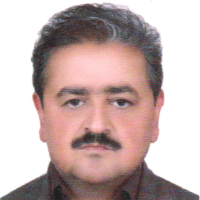The effect of putrescine and calcium nitrate on physiological properties and sesame (Sesamum indicum L.) yield under moisture stress
Reduce moisture levels are the most important factor, which limit growth and yield production in arid and semiarid regions. Sesame is usually a plant in arid and semi-arid regions that is exposed to various stresses during its growth period. Depending on the plant susceptibility, each of the stresses can have different effects on their growth, metabolism and function. Drought stress affects a vast range of plant morphological, physiological and biochemical characteristics, for example, it results in altered water relations, suppressed cellular activities reduced content of chlorophyll and carotenoids induced generation of reactive oxygen species (ROS). Proline plays a major role in osmotic adjustment and protects the cells by scavenging reactive oxygen species (ROS). While Application of some elements reduces the negative effects of stress, including calcium ion, which has significant effects on the physiological processes of plants and improves morphological and biochemical traits of plants under stress. In recent years, several reports have been suggested to increase plant tolerance to stresses, such as the use of growth regulators and the relationships between polyamines and environmental stresses. The most important polyamines include putrescine, spermidine and spermine. Some of the physiological processes such as cell division and plant development could be altered by these growth regulators. Putrescine accumulates in plant tissues during stress, causing plants to withstand abiotic stresses, including drought.
In order to study the effects of Putrescin and Calcium Nitrate application on some physiological and biochemical traits of sesame under different moisture levels a Spilt plot- factorial experiment was conducted based on block complete randomized design with three replications in research farm of Birjand university in 2018. In this experiment, Moisture levels treatments with tree levels were (100%, 75%, and 50%) as main factor and foliar application Calcium nitrate at tree levels (0, 5, 10 Mm) and Putrescine in two levels (0.5 Mm, spray with water) as the second factor were studied. In this experiment traits measured including chlorophyll a, chlorophyll b, chlorophyll index, Proline, number of grain per plant, number of capsule per plant, thousand–seed weight and grain yield.
The results of ANOVA showed that the interaction of Moisture levels × calcium nitrate × putrescine had significant effect on chlorophyll a, chlorophyll b, chlorophyll index, Proline, number of grain per plant, number of capsule per plant, and grain yield. Drought stress has had a significant effect on sesame seed yield and severe stress resulted in a decrease in seed yield. The highest grain yield respectively was obtained from 100% and 75% water requirement levels and the lowest with an average of (376.8 kg ha-1) from 50% water requirement. The highest proline was obtained from 50 percent water requirement and the lowest with from 100% water the difference between the minimum value and the maximum value was 64%.Interaction of calcium nitrate and putrescine on thousand–seed weight was significant (P≤0.05). The results also showed that the highest grain yield on all measured traits obtained when using foliar application of calcium nitrate (10 Mm) and putrescine.
It was observed that sesame has had a relative tolerance to moisture restriction so that 75% of water requirement stress could not have a significant effect on yield and yield components and stress of 50% water requirement was caused 40% reduction in grain yield in this plant. It was also observed that moisture stress led to has been increased proline production in the plant. Causes of increased proline content at conditions under stress can be the production of free radical and reactive oxygen species (ROS). Foliar application of putrescine and calcium nitrate was increased stress tolerance and improved yield and yield components of sesame. Concomitant use of putrescine and calcium nitrate had been a synergistic effect so that the highest foliar application efficiency was observed from the simultaneous use of 10 Mm calcium nitrate and 0.5 Mm putrescine.
- حق عضویت دریافتی صرف حمایت از نشریات عضو و نگهداری، تکمیل و توسعه مگیران میشود.
- پرداخت حق اشتراک و دانلود مقالات اجازه بازنشر آن در سایر رسانههای چاپی و دیجیتال را به کاربر نمیدهد.



